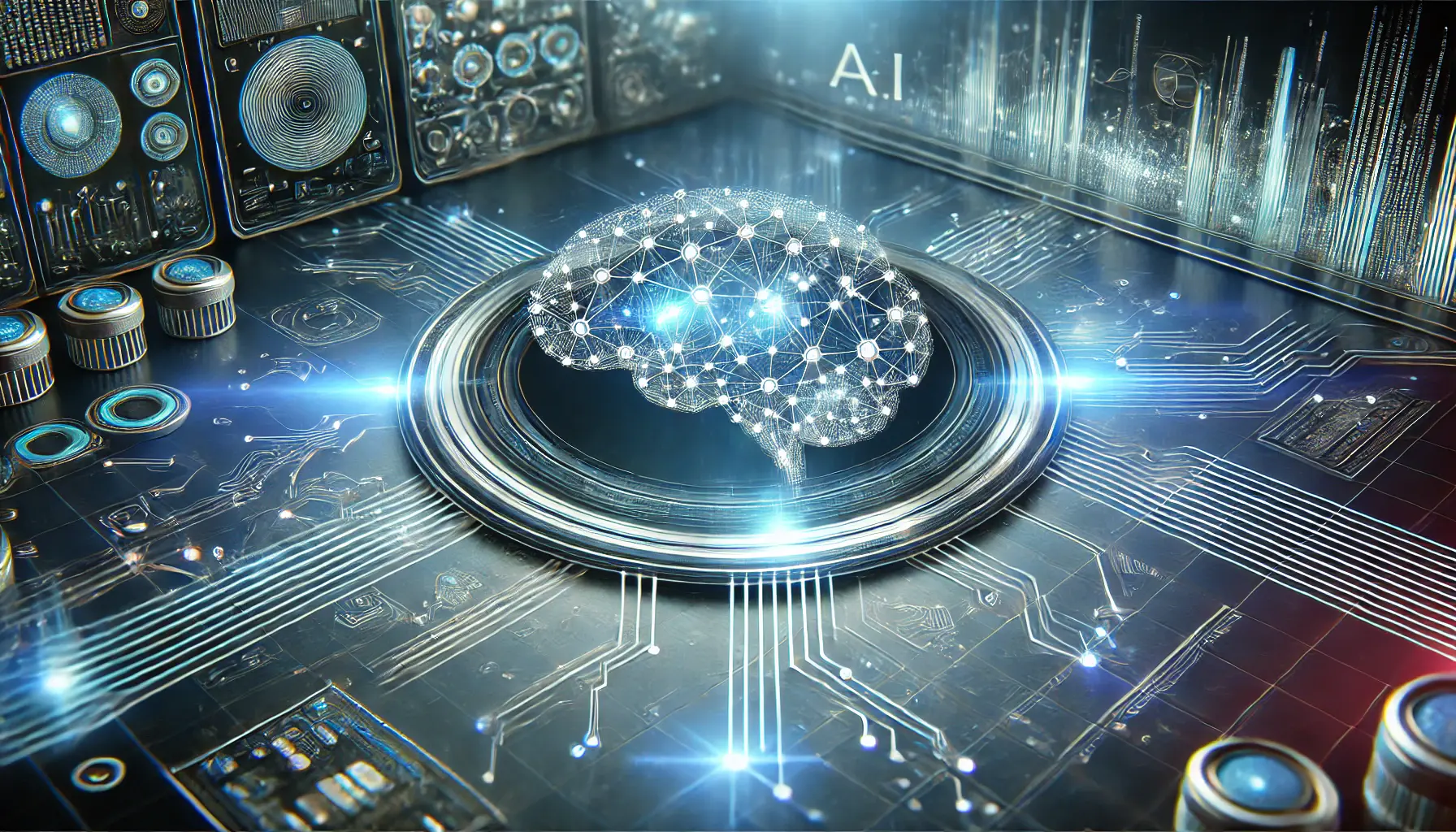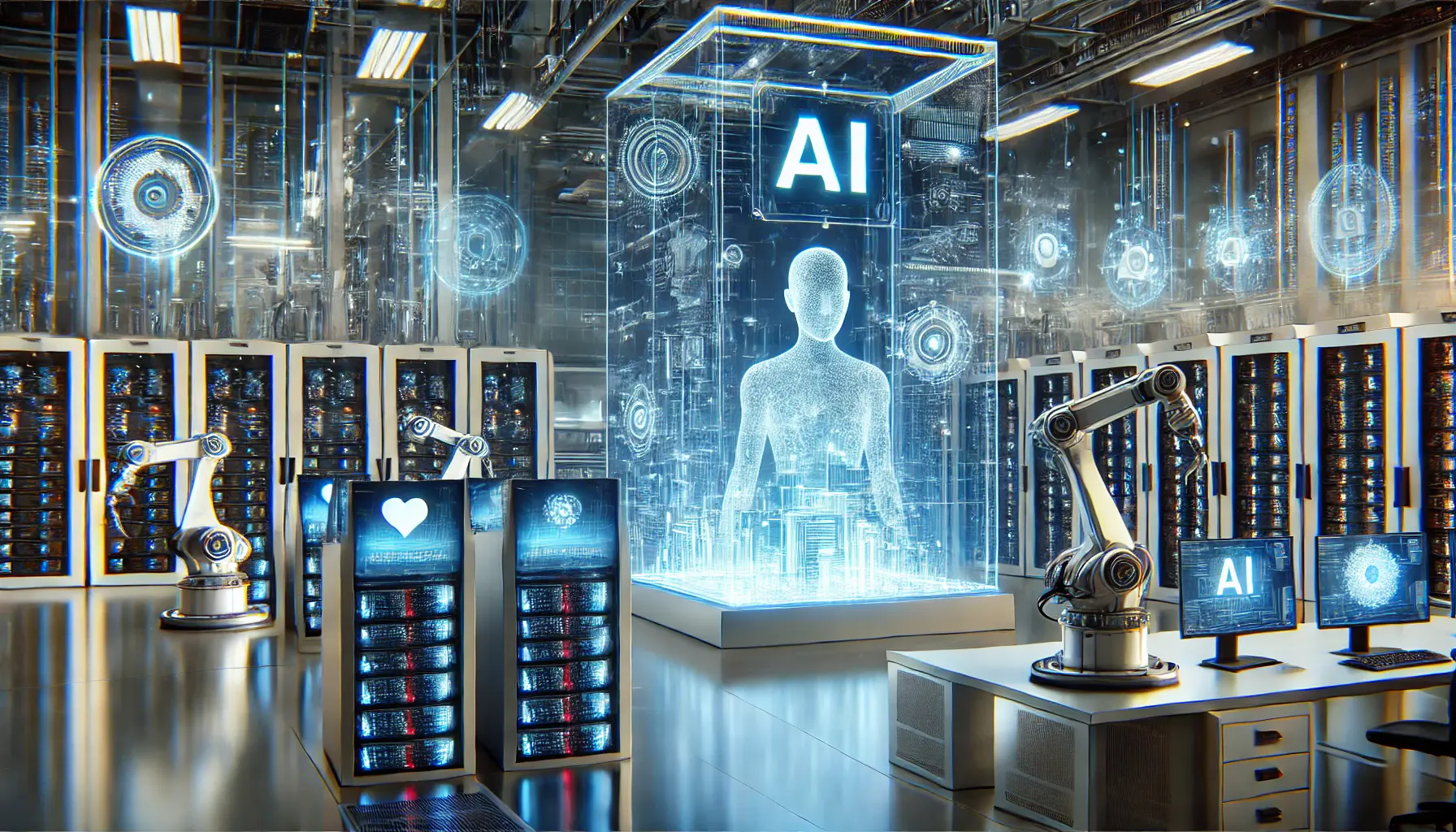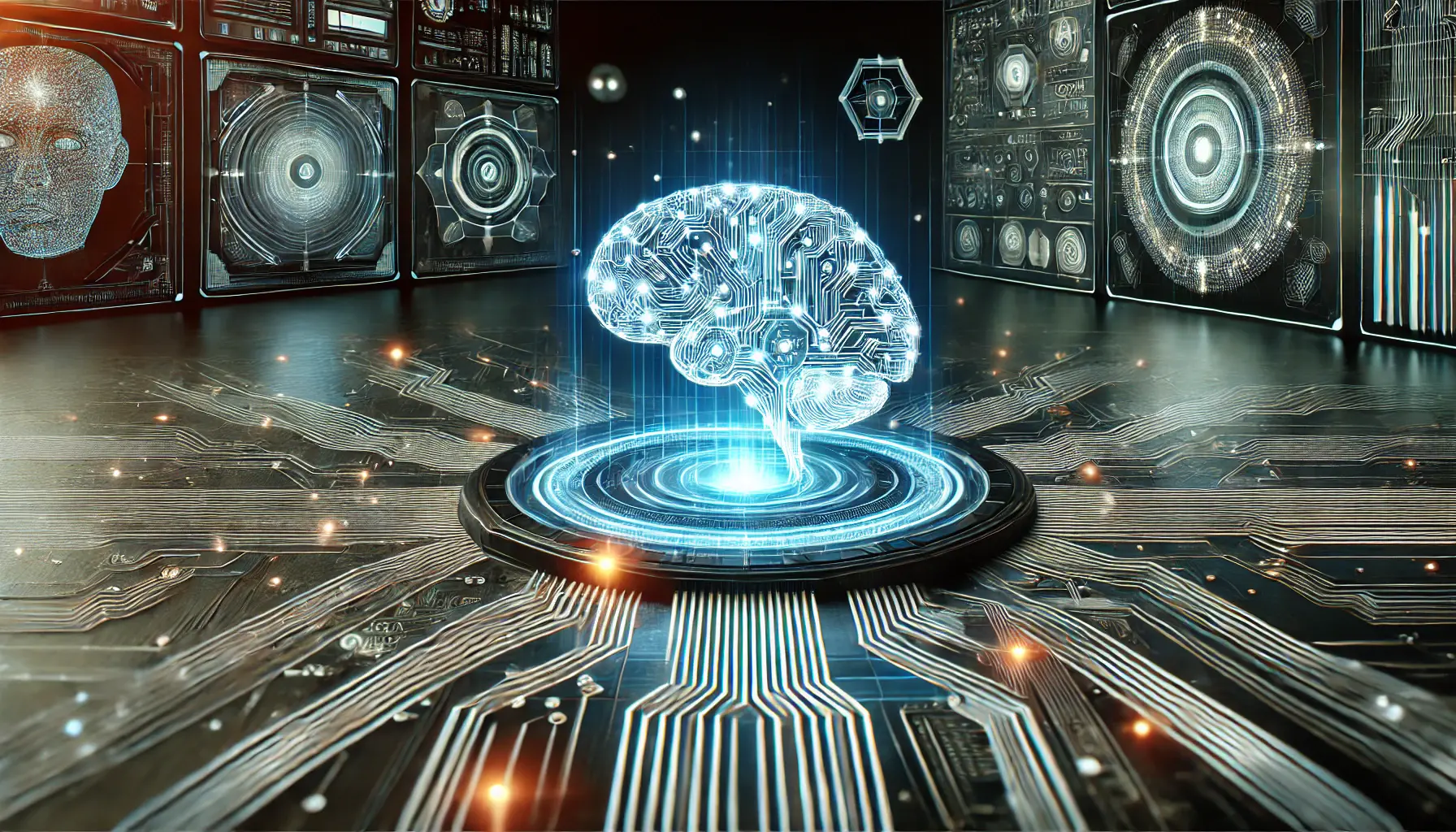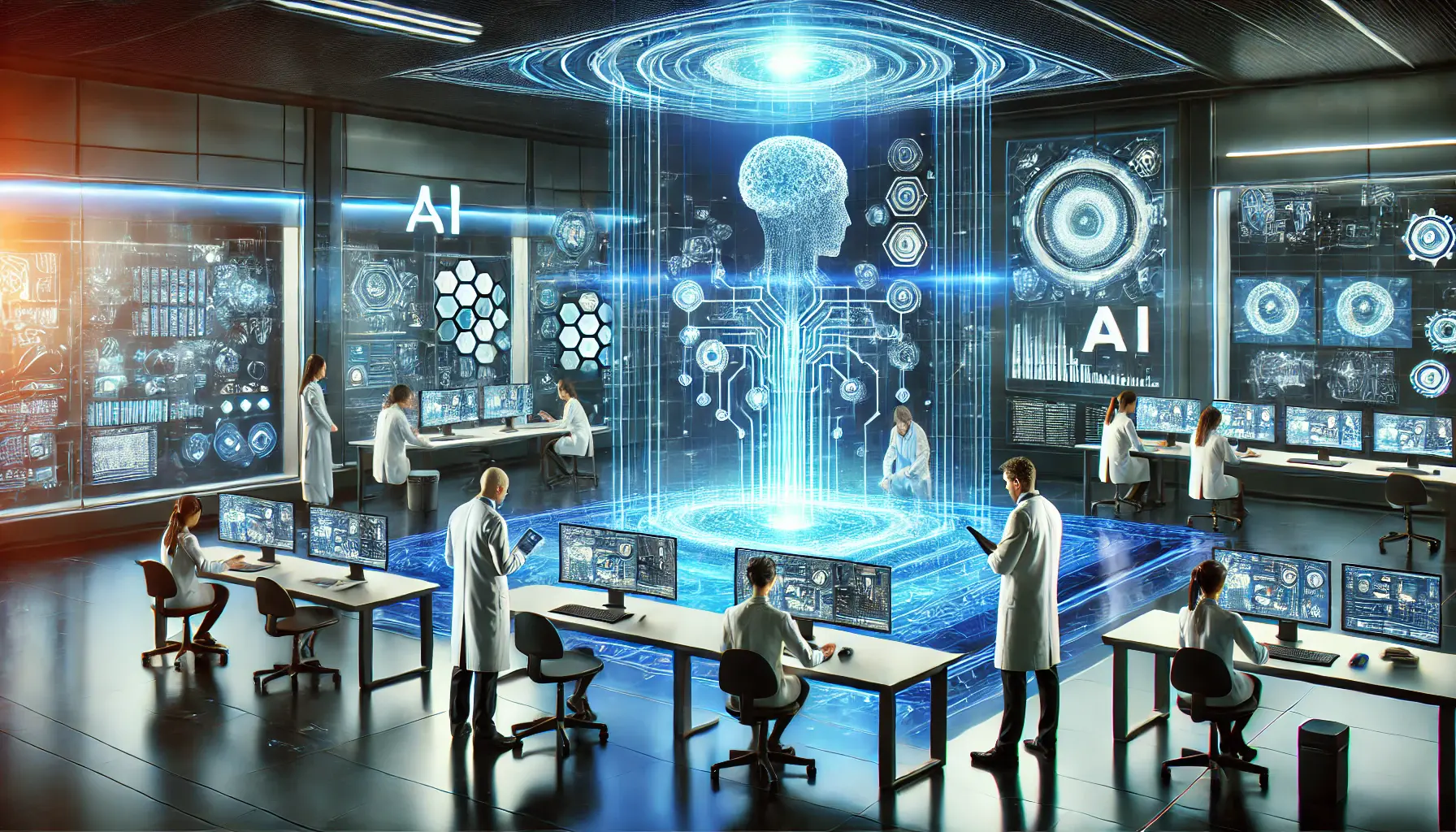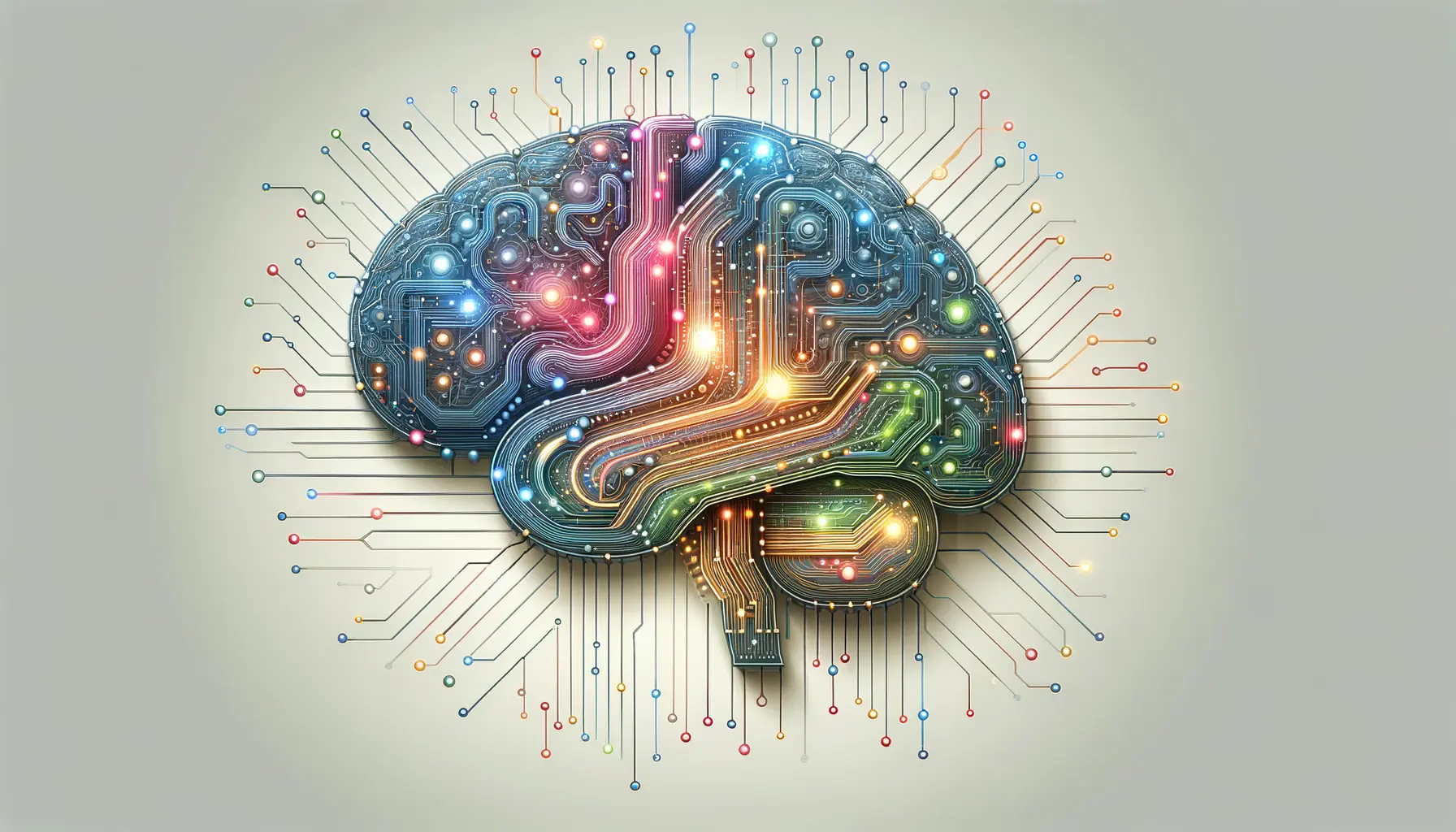The advent of ChatGPT 4 marks a significant milestone in the evolution of artificial intelligence, particularly in the realm of natural language processing (NLP) and machine learning.
This latest iteration of OpenAI’s groundbreaking language model has captivated the tech community and beyond, promising an even more sophisticated level of interaction between humans and machines.
The technology behind ChatGPT 4 is not just a leap forward in AI’s ability to understand and generate human-like text; it’s a testament to the rapid advancements in computational linguistics and the ever-increasing power of neural networks.
At its core, ChatGPT 4 is built upon the foundation of generative pre-trained transformer models, or GPTs, which have revolutionized the way we think about AI’s capabilities in language understanding and creation.
This technology harnesses the power of deep learning to analyze vast datasets, learning from the nuances of human language to produce responses that are increasingly indistinguishable from those a human might generate.
The implications of this are profound, offering potential applications that span from enhancing customer service experiences to creating more immersive educational tools.
- Understanding the Core Technology
- Enhancements in Natural Language Understanding
- Expanding Applications Across Industries
- Challenges and Ethical Considerations
- Integration and Implementation Strategies
- Future Directions and Innovations
- Impact on Society and Everyday Life
- Embracing the Future with ChatGPT 4
- FAQs on The Technology Behind ChatGPT 4
Understanding the Core Technology
The essence of ChatGPT 4’s technology lies in its sophisticated neural network architecture, known as the transformer model.
This architecture is designed to handle sequential data, making it particularly well-suited for language tasks.
Unlike its predecessors, ChatGPT 4 utilizes an even more advanced version of this model, incorporating billions of parameters that allow it to grasp the subtleties of language with unprecedented accuracy.
The model’s ability to process and generate text is based on its understanding of context, grammar, and even the cultural nuances embedded within language.
One of the key advancements in ChatGPT 4 is its multimodal capabilities.
This means that the model is not just limited to understanding text; it can also interpret and generate responses based on images, providing a more holistic approach to AI-driven communication.
This multimodal feature opens up new avenues for AI applications, making ChatGPT 4 a versatile tool for a wide range of industries, from marketing and content creation to healthcare and education.
Training and Data Processing
The training process of ChatGPT 4 is both extensive and intensive, involving the analysis of vast amounts of text data from diverse sources.
This process, known as unsupervised learning, enables the model to learn language patterns, grammar, and vocabulary without explicit instructions.
The result is an AI that can generate coherent, contextually relevant text based on the input it receives.
The training also incorporates novel techniques in machine learning, such as reinforcement learning from human feedback (RLHF), which refines the model’s responses based on human evaluation.
Another aspect of ChatGPT 4’s technology is its efficiency in data processing.
Despite the complexity of its neural network, the model is optimized to reduce computational costs without compromising performance.
This is achieved through innovations in algorithm design and hardware optimization, ensuring that ChatGPT 4 can operate effectively even on large-scale tasks.
The balance between performance and efficiency is crucial for making advanced AI technologies more accessible and sustainable in the long run.
The technology behind ChatGPT 4 represents a significant leap in AI’s ability to understand and interact with the world in a way that is more human-like than ever before.
Enhancements in Natural Language Understanding
The advancements in natural language understanding (NLU) within ChatGPT 4 are pivotal, marking a new era in how machines comprehend human language.
This leap in NLU is not just about parsing words or sentences; it’s about grasping the underlying meanings, intentions, and emotions conveyed through language.
The improvements in this area are a result of both the expansion of the model’s dataset and the refinement of its algorithms.
Key to these enhancements is the model’s ability to discern context over longer stretches of text.
This ability allows ChatGPT 4 to maintain coherence over extended conversations or written pieces, providing responses that are not only relevant but also deeply connected to the preceding dialogue or text.
The implications for applications such as conversational agents, content creation, and even therapeutic bots are profound, offering interactions that are more meaningful and personalized.
Improved Contextual Awareness
- Longer memory span: ChatGPT 4 can remember and reference information from earlier in the conversation, leading to more coherent and contextually relevant interactions.
- Deeper understanding of user intent: The model’s refined algorithms allow it to interpret the nuances of user requests more accurately, enabling it to respond in ways that are more aligned with the user’s expectations.
- Emotion recognition: ChatGPT 4’s improved NLU capabilities include the ability to detect and respond to the emotional tone of the text, enhancing its use in customer service and support scenarios.
Advancements in Language and Grammar Proficiency
The technology behind ChatGPT 4 also includes significant improvements in its grasp of language and grammar.
These advancements are not just about expanding the model’s vocabulary; they’re about understanding the rules and patterns that govern language use.
By mastering these complexities, ChatGPT 4 can generate text that is not only grammatically correct but also stylistically varied, adapting its output to match the desired tone or style of the conversation or content.
Moreover, the model’s enhanced language proficiency extends to its ability to understand and generate content in multiple languages, including those that are less commonly represented in digital content.
This multilingual capability broadens the potential impact of ChatGPT 4, making it a valuable tool for global communication and content creation.
The enhancements in natural language understanding and language proficiency within ChatGPT 4 underscore its potential to revolutionize interactions between humans and machines, making them more natural, intuitive, and effective.
Expanding Applications Across Industries
The technological advancements embodied in ChatGPT 4 have paved the way for its application across a diverse range of industries.
From enhancing customer service to revolutionizing content creation, the potential uses of this AI model are vast and varied.
The ability of ChatGPT 4 to understand and generate human-like text, coupled with its multimodal capabilities, means it can be tailored to meet the specific needs of different sectors, offering solutions that are both innovative and effective.
Below, we explore some of the key industries where ChatGPT 4 is making a significant impact, illustrating the model’s versatility and the breadth of its potential applications.
Customer Service and Support
- Automated customer support: ChatGPT 4 can power chatbots that handle customer inquiries in real-time, providing accurate and contextually relevant responses that improve the customer experience.
- Personalized recommendations: By understanding customer preferences and behavior, ChatGPT 4 can offer personalized product or service recommendations, enhancing the shopping experience.
Education and Learning
- Tutoring and support: ChatGPT 4 can act as a personal tutor, offering explanations, answering questions, and providing feedback to students across a wide range of subjects.
- Content creation: Educators can use ChatGPT 4 to generate educational content, including lesson plans, quizzes, and interactive learning materials.
Content Creation and Media
- Automated content generation: From writing articles to creating marketing copy, ChatGPT 4 can produce high-quality content quickly and efficiently.
- Language translation: ChatGPT 4’s multilingual capabilities make it an effective tool for translating content, opening up media to a global audience.
Healthcare
ChatGPT 4 is also finding applications in the healthcare industry, where its ability to process and generate language can support both patients and professionals.
For instance, it can provide medical information, assist in patient triage, and even help in the creation of personalized care plans.
Moreover, its capacity to analyze research papers and medical data can support healthcare professionals in staying up-to-date with the latest developments in their field.
The versatility of ChatGPT 4, driven by its advanced technology, is enabling its adoption across industries, demonstrating the model’s potential to transform professional practices and enhance service delivery.
Challenges and Ethical Considerations
While the advancements in ChatGPT 4 herald a new era of possibilities in AI, they also bring to the forefront a range of challenges and ethical considerations.
As we integrate more sophisticated AI models into various aspects of daily life and industry, it becomes imperative to address these concerns thoughtfully and proactively.
The development and deployment of ChatGPT 4, despite its impressive capabilities, are not exempt from these critical discussions.
One of the primary challenges lies in ensuring the accuracy and reliability of the AI’s outputs.
Given that ChatGPT 4 generates responses based on patterns learned from vast datasets, there’s a risk of perpetuating misinformation or biases present in the training data.
This issue underscores the importance of curating and monitoring the data used for training AI models, as well as implementing robust mechanisms for continuous learning and improvement.
Data Privacy and Security
- Protecting user data: As ChatGPT 4 processes and generates personalized responses, it’s crucial to ensure that user data is handled securely, respecting privacy laws and regulations.
- Preventing misuse: The potential for AI technologies like ChatGPT 4 to be used for malicious purposes, such as generating deceptive content, requires the development of safeguards and ethical guidelines.
Addressing Bias and Fairness
The issue of bias in AI is a significant concern, as models can inadvertently learn and amplify societal biases present in their training data.
Efforts to mitigate bias in ChatGPT 4 involve not only diversifying the data sources but also incorporating fairness criteria into the model’s training process.
Ensuring that AI systems treat all users equitably is a complex challenge that requires ongoing attention and refinement.
Moreover, the development of ChatGPT 4 raises questions about the transparency of AI models.
As these systems become more integral to decision-making processes, understanding how they arrive at certain conclusions or recommendations becomes critical.
Striking a balance between the proprietary nature of AI technologies and the need for transparency is a delicate task that impacts trust and accountability.
Regulatory Compliance and Governance
Navigating the regulatory landscape is another challenge for the deployment of ChatGPT 4.
As governments and international bodies begin to introduce regulations governing AI, ensuring compliance without stifling innovation is a key concern for developers and users alike.
Establishing clear governance structures and ethical guidelines for AI use can help in addressing these regulatory challenges, fostering an environment where AI can thrive responsibly.
Addressing the challenges and ethical considerations associated with ChatGPT 4 is essential for harnessing its potential in a way that is beneficial, fair, and secure for all stakeholders.
Integration and Implementation Strategies
The integration of ChatGPT 4 into existing systems and workflows represents a significant opportunity for businesses and organizations to enhance their operations.
However, successful implementation requires careful planning and strategic consideration to fully leverage the AI model’s capabilities while addressing potential challenges.
This part of the article delves into effective strategies for integrating ChatGPT 4 into various operational contexts.
Understanding the technical requirements and ensuring compatibility with existing infrastructure is the first step in the integration process.
ChatGPT 4’s advanced AI capabilities may necessitate updates or modifications to current systems to support its functionality.
Additionally, organizations must consider the human aspect of AI integration, including training staff to work alongside AI tools and adjusting workflows to accommodate new AI-driven processes.
Customization for Specific Use Cases
- Identifying needs: Tailoring ChatGPT 4’s capabilities to address specific organizational needs or challenges ensures that the integration delivers tangible benefits.
- Developing custom solutions: Leveraging ChatGPT 4’s API for custom application development can create tailored solutions that fit seamlessly into existing operations.
Ensuring Scalability and Flexibility
As organizations grow, their AI needs will evolve.
Designing ChatGPT 4 integrations with scalability in mind allows for adjustments and expansions without significant overhauls.
This approach ensures that the AI implementation can adapt to changing business needs, technological advancements, and emerging opportunities.
Flexibility in integration strategies also allows organizations to experiment with different applications of ChatGPT 4, fostering innovation and continuous improvement.
Training and Support for Users
For ChatGPT 4 to be effectively integrated into organizational processes, users at all levels must understand how to interact with and leverage the AI model.
Providing comprehensive training and ongoing support is crucial for maximizing the benefits of ChatGPT 4 integration.
This includes not only technical training for IT staff but also guidance for end-users on how to effectively use the AI tool in their daily tasks.
Monitoring and Continuous Improvement
Implementing ChatGPT 4 is not a one-time event but an ongoing process that requires regular monitoring and updates.
Collecting feedback from users, analyzing the performance of AI-driven processes, and staying informed about advancements in AI technology are essential for continuous improvement.
This iterative approach ensures that the integration of ChatGPT 4 remains aligned with organizational goals and the evolving landscape of AI capabilities.
Effective integration and implementation of ChatGPT 4 require a strategic approach that considers technical, human, and organizational factors to fully realize the potential of AI in enhancing operations and services.
Future Directions and Innovations
The continuous evolution of AI technologies like ChatGPT 4 hints at a future where the boundaries between human and machine capabilities become increasingly blurred.
As we look ahead, the trajectory of ChatGPT and similar AI models is poised to introduce a new wave of innovations, transforming how we interact with technology on a fundamental level.
This forward-looking perspective explores potential future directions for ChatGPT 4 and the broader field of artificial intelligence.
One of the most exciting prospects is the further enhancement of AI’s understanding and generation of human language.
Future iterations of ChatGPT may achieve even greater levels of linguistic nuance, enabling more sophisticated and nuanced conversations between humans and machines.
This could revolutionize fields such as education, where AI tutors could provide personalized learning experiences, or healthcare, where AI could offer support and counseling with unprecedented empathy and insight.
Augmented Multimodal Capabilities
- Integration with sensory inputs: Future versions of ChatGPT could incorporate additional sensory data, such as sound or touch, further enriching the AI’s understanding of the world and its interactions with humans.
- Enhanced creative outputs: By leveraging multimodal inputs, AI could create more complex and creative outputs, from generating music and art to designing innovative products and solutions.
Advancements in AI Ethics and Governance
As AI technologies advance, so too will the frameworks for ensuring their ethical use and governance.
Future developments in ChatGPT and similar models will likely be accompanied by more sophisticated mechanisms for addressing bias, privacy, and security concerns.
This could include transparent AI systems that allow users to understand and query the decision-making processes behind AI-generated outputs.
Collaborative AI and Human Partnerships
The future of AI is not just about machines working for us but with us.
ChatGPT 4 and its successors could play a central role in collaborative environments where humans and AI work together to solve complex problems, innovate, and create.
These partnerships could leverage the strengths of both human creativity and AI’s analytical capabilities, leading to breakthroughs in science, art, and technology.
Breaking New Ground in AI Accessibility
Finally, future innovations in AI will likely focus on making powerful technologies like ChatGPT 4 more accessible to people around the world.
This includes efforts to democratize AI, ensuring that individuals and organizations, regardless of size or resources, can benefit from AI’s transformative potential.
By breaking down barriers to access, the next generations of AI could empower a wider range of voices and perspectives, driving global innovation and progress.
The future of ChatGPT 4 and artificial intelligence is bright, with potential innovations that promise to further blur the lines between human and machine, enhance our capabilities, and transform our world in ways we are only beginning to imagine.
Impact on Society and Everyday Life
The advent of ChatGPT 4 and its underlying technologies is not just a milestone in the field of artificial intelligence; it’s a transformative force that is reshaping society and everyday life.
The implications of this advanced AI model extend far beyond the tech industry, influencing various aspects of human interaction, work, and leisure.
As we navigate this new landscape, it’s crucial to consider both the opportunities and challenges presented by such a powerful tool.
ChatGPT 4’s ability to understand and generate human-like text has the potential to revolutionize communication.
By breaking down language barriers and enhancing our ability to express complex ideas, ChatGPT 4 can foster a more connected world.
However, this also raises questions about the authenticity of digital communication and the importance of maintaining human elements in our interactions.
Revolutionizing Work and Productivity
- Automation and efficiency: ChatGPT 4 is streamlining workflows across industries, automating routine tasks, and freeing up human workers to focus on creative and strategic activities.
- Decision support: By providing instant access to information and insights, ChatGPT 4 is enhancing decision-making processes, leading to more informed and effective outcomes.
Enhancing Learning and Creativity
ChatGPT 4’s educational applications are democratizing learning, offering personalized tutoring and access to knowledge regardless of geographical or financial barriers.
Additionally, its ability to generate creative content is unlocking new forms of artistic expression, enabling creators to explore novel ideas and perspectives.
Challenges in Digital Ethics and Security
With great power comes great responsibility.
The widespread adoption of ChatGPT 4 necessitates a robust discussion around digital ethics, including concerns about privacy, data security, and the potential for misuse.
Ensuring that AI technologies are used responsibly and ethically is paramount to realizing their positive impact on society.
Shaping the Future of Human-AI Interaction
As we look to the future, the role of AI in our lives will undoubtedly grow.
ChatGPT 4 represents a step towards a future where AI assists us not just in performing tasks but in enhancing our human experiences.
The way we adapt to and integrate these technologies will shape the trajectory of human-AI interaction, with the potential to enrich our lives in unprecedented ways.
It’s a misconception that AI like ChatGPT 4 will replace human roles; instead, it will augment human capabilities, leading to new opportunities for collaboration and innovation.
Embracing the Future with ChatGPT 4
The journey through the technological marvels of ChatGPT 4 reveals a future where artificial intelligence significantly enhances human capabilities, reshaping how we communicate, learn, work, and create.
As we stand on the brink of this new era, it’s clear that the technology behind ChatGPT 4 is not just an advancement in AI but a gateway to untapped potential across various sectors of society.
The implications of such a tool are vast, promising to elevate the human experience to unprecedented levels while also presenting challenges that necessitate careful consideration and ethical stewardship.
The Transformative Power of ChatGPT 4
ChatGPT 4’s impact on society and everyday life is profound, offering a glimpse into a future where AI and human intelligence coalesce to unlock new realms of possibility.
From revolutionizing customer service with instant, accurate support to democratizing education through personalized learning experiences, ChatGPT 4 stands as a testament to the transformative power of AI.
Moreover, its role in content creation and media heralds a new age of creativity, where AI-generated content complements human creativity, pushing the boundaries of what’s possible in art, literature, and beyond.
Navigating Challenges and Ethical Considerations
Yet, with great power comes great responsibility.
The ascent of ChatGPT 4 brings to light critical ethical considerations and challenges that must be navigated with diligence and foresight.
Issues of data privacy, security, and the potential for bias within AI-generated content call for a concerted effort to ensure that the deployment of ChatGPT 4 adheres to the highest standards of ethical practice.
As we integrate this technology into the fabric of society, it is incumbent upon us to foster an environment where AI serves the greater good, enhancing human welfare while safeguarding against misuse.
Charting a Course for the Future
- The integration of ChatGPT 4 into educational platforms, offering personalized learning paths that adapt to individual student needs.
- The use of ChatGPT 4 in healthcare to provide support and information, aiding both patients and professionals in making informed decisions.
- The application of ChatGPT 4 in creative industries, where it can assist in the creative process, from initial concept to final creation.
In conclusion, the technology behind ChatGPT 4 represents a pivotal advancement in the field of artificial intelligence, heralding a future where AI enhances every facet of human life.
As we embrace this future, it is essential to proceed with a balanced approach, leveraging the benefits of ChatGPT 4 while addressing the ethical and societal challenges it presents.
By doing so, we can ensure that this revolutionary technology acts as a force for good, propelling humanity towards a more connected, creative, and informed world.
FAQs on The Technology Behind ChatGPT 4
Explore the most common inquiries about the groundbreaking AI technology that powers ChatGPT 4.
ChatGPT 4 is an advanced AI model developed by OpenAI, known for its deep understanding and generation of human-like text, enhancing AI’s conversational capabilities.
It operates on a transformer-based neural network, analyzing vast datasets to predict and generate text that mimics human conversation.
ChatGPT 4 introduces multimodal capabilities, processing both text and images, and features a larger, more refined dataset for improved accuracy.
Yes, ChatGPT 4 is multilingual, capable of understanding and generating content in various languages, broadening its applicability globally.
Its uses span customer service, education, content creation, and more, offering personalized interactions and automating complex tasks.
While ChatGPT 4 is designed with safety in mind, ongoing efforts are made to address ethical considerations and enhance data security.
Businesses can integrate ChatGPT 4 via APIs, customizing its capabilities to fit specific operational needs and enhance customer experiences.
The future of ChatGPT 4 lies in continuous improvement, with potential advancements in AI ethics, multimodal interaction, and accessibility.

